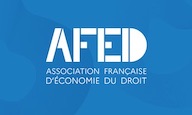Evidence can be based on information gathered by classic means, such as testimonials. It can also be based on videos posted on social networks. The latter can prove decisive when access to the field is difficult, as is the case in many conflict situations. For example, although Syria closed its borders to UN investigators in March 2011, the Independent International Commission of Inquiry on the Syrian Arab Republic was able to establish the facts of human rights violations. It has obtained numerous videos posted on social networks. Similarly, investigators from the International Criminal Court can use evidence from social networks. However, the probative value of such information is called into question in criminal courts.
This article investigates both theoretically and empirically the use of digital versus classic evidence in international criminal courts. In the model, we assume that a prosecutor can look for either digital or classic evidence, assuming that digital evidence is only corroborative. This means that it cannot be used in the absence of classic evidence. We show that with a more demanding standard of proof, the amount of both classic and digital evidence produced by the prosecutor increases. However, the extent of the increase for each type of evidence depends on the relative marginal cost of each, and the degree to which the two types of evidence are complementary. More specifically, when the two types of evidence are more corroborative and if classic evidence is more expensive (or more difficult to obtain) than digital evidence, then the additional number of digital proofs collected by the prosecutor tends to increase more than the number of traditional proofs as the standard increases (and vice versa).
Empirically, we exploit the differences in the standard of proof between the pre-trial and trial phases, which is higher at trial than in the pre-trial phase. Our database consists of 386 transcripts from 7 cases handled by the ICC for acts committed from 2010 onwards. We are conducting a textual analysis to explore the differences in the use of digital vs. classic evidence in these two phases.
- Poster

 PDF version
PDF version

